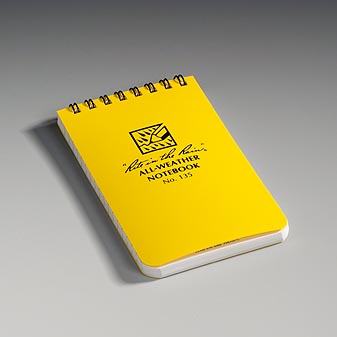Duncan Brown has been Head of UX Design at Caplin since 2007.
Collaborating across Caplin with business and engineering, Duncan has defined and implemented a process to ensure that users have a better and more engaging experience with Caplin’s e-trading products.
Heading up a recently expanded UX Design team, Duncan takes two minutes to tell Jennifer Maitland a little bit more about leading UX design forward in the e-Commerce space.

Q: How is a good user experience design crucial to creating compelling e-trading services within a single-dealer platform?
A: A good experience is important because an SDP provides a much more direct relationship between the institution and the trading ‘customer’. Speed of execution and price are still important but the direct nature of an SDP gives much more opportunity for cultivating and building a customer relationship through an increased level of service and attention to detail. Offering a more engaging and complete trading experience integrating trade stimulus, trending and social aspects, ease of execution and effective post trade workflow means more trading opportunities can be captured and customers retained.
Q: There are a lot of definitions out there used to describe UX design. What’s yours?
A: I previously worked in a Customer Service Design (CSD) agency spanning on-line, in store and telephone customer experience design. I have brought a number of these CSD ideas and techniques to Caplin. While there is definitely cross-over between the two, for me there are enough differences to not get them confused. I can see that in the future as more and more transactions involve technology they will become more analogous.
- How I define CSD: It’s the experience a customer has when they come into contact with a company.
- How I define UX: It’s the engagement a customer experiences when they interact with technology.
So I define UX design as the art of creating and maintaining customer engagement through technology.
Q: Everyone’s had one job they will always remember as their worst. What was yours?
A: No worst job – really, although I once worked as a pot washer in The Feathers Hotel, Woodstock. It was hard work and grim at times – have you ever prepared a sackful of pink fir potatoes? I remember there were great big bars of white Swiss chocolate under the pasty station. Chunks of that kept going missing!
When I go back now as a customer I always buy the pot washer a drink much to the bemusement of the staff.
But if there were no clean pots there wouldn’t be a restaurant. It’s easy to forget the contribution every person makes to deliver a complete customer experience.
Q: There seem to be some conflicting views surrounding UX design and its place within a software development environment. What’s your take on it?
A: Who wouldn’t want to delight their customers, engage with them and give them a more satisfying experience when interacting with the technology provided to them? Just whipping up a graphical user interface (GUI) with no UX groundwork will miss a mountain of opportunities to serve and delight customers.
In designing user experience for e-commerce software, we need to get down to the trading floor to understand the contextual needs of users; get out and visit corporate treasurers and other clients at their own offices. The thing is this approach isn’t rocket science, it’s just the way to make humane products through proper design research.
Only through these deep-dive contextual observations can we as software designers and user interface engineers create great product designs.
Q: People at Caplin blog about narrative journey maps. What are they, and how have they been particularly useful to building successful single-dealer platforms?
A: The UX team at Caplin are always looking for ways to enhance our Usage Centered Design (UCD) process and tools because we realise the importance of UCD in helping us to uncover the pain points of our users.
When designing/refining application ‘flow’ one of the tools we use is a Narrative Journey Map (NJM). This is a mash-up inspired by other UCD techniques but combined into something we find very useful in an agile environment.
We use them for:
- recording reality (actual interactions)
- Envisioning designs using personas
- a communication tool or information radiator
- uncovering pain points using our ’emotional barometer’
- showing where to dedicate effort and resources to turn pain points into positive touch points
- identifying ways that an SDP can meet the unmet needs of a customer
- identifying any unknowns that require further investigation
Q: Favourite book on UX design?
A: I love books and could never have a single favourite… so here’s a bunch:
- About Face 3, The Essentials of Interaction Design – Alan Cooper , Robert Reimann , Dave CroninFor me UX IS Interaction Design. Some of the design principles later in the book can seem a bit simplistic but it’s easy to forget the basics.
- The Visual Display of Quantitative Information/Envisioning Information/Visual Explanations/Beautiful Evidence – Edward Tufte…In fact anything by Edward Tufte (from information design to sculpture) is an inspiration in simplicity.
- Printing Design And Layout – Vincent SteerA classic book on typography, aesthetics and design.
- A Technique for Producing Ideas – James Webb YoungProbably the best (and smallest) book on understanding the process of creativity.
Q: At SPA 2010, you and Sarah Lawfull presented Persona Driven Development – Can it Work for you? Tell us more about personas and how they’ve been used to improve the user experience of Caplin’s products.
A: Personas are an archetype, or a distillation of the needs/motivations and pain points of your target user. By using the character that a persona brings to the software development lifecycle you can use them to understand the drivers behind interactions and design decisions. They are a kind of shorthand to personify and maintain a target throughout the process.

Personas are not a replacement for user research and contextual studies, but even scant user details can be brought to life through modelling a person. They give a unified vision of ‘who’ we are doing something for. It’s so easy to have your own internal understanding of who/what and why. By externalising it and making it explicit, misunderstandings can be minimised.
At Caplin we have used personas to understand more (and share this understanding) of the developers using our technology within our institutional customers. This led to real improvements in how we package and run the install of our Caplin Trader RIA framework.
We have a continuous modelling stream developing personas for different users of Single Dealer Platforms, from day traders through to institutional sales traders. This is giving us real insight into the specific features and workflows expected by these users.
Q: Last computer or mobile device you bought?
A: An RITR 135 – It’s perfect mobile device for capturing ideas anywhere… Even underwater… (which I haven’t done yet – but – if I am ever underwater and need to capture an idea… it’s nice to know that I could).

Combined with an OHTO Super Promecha Pencil:

It’s a winning combination and the batteries last forever, unlike my Android HTC Desire.
Q: Duncan, tell us what the future holds for UX design, especially in the e-Commerce space.
A: We’re entering a post-desktop age when ubiquitous computing starts to deliver on some of its promises. Multi-use, haptic mobile technology is presenting us with exciting challenges for maintaining a cohesive user experience, while at the same time, we’re faced with a trend towards simplicity of interaction and information visualisation.
There is also an important trend towards mass-customisation. When it comes to UX, it’s one-size-no-longer-fits-all – if a customer wants a ‘triple venti Greek SDP frappucino’, we need to provide the technology to deliver it.
